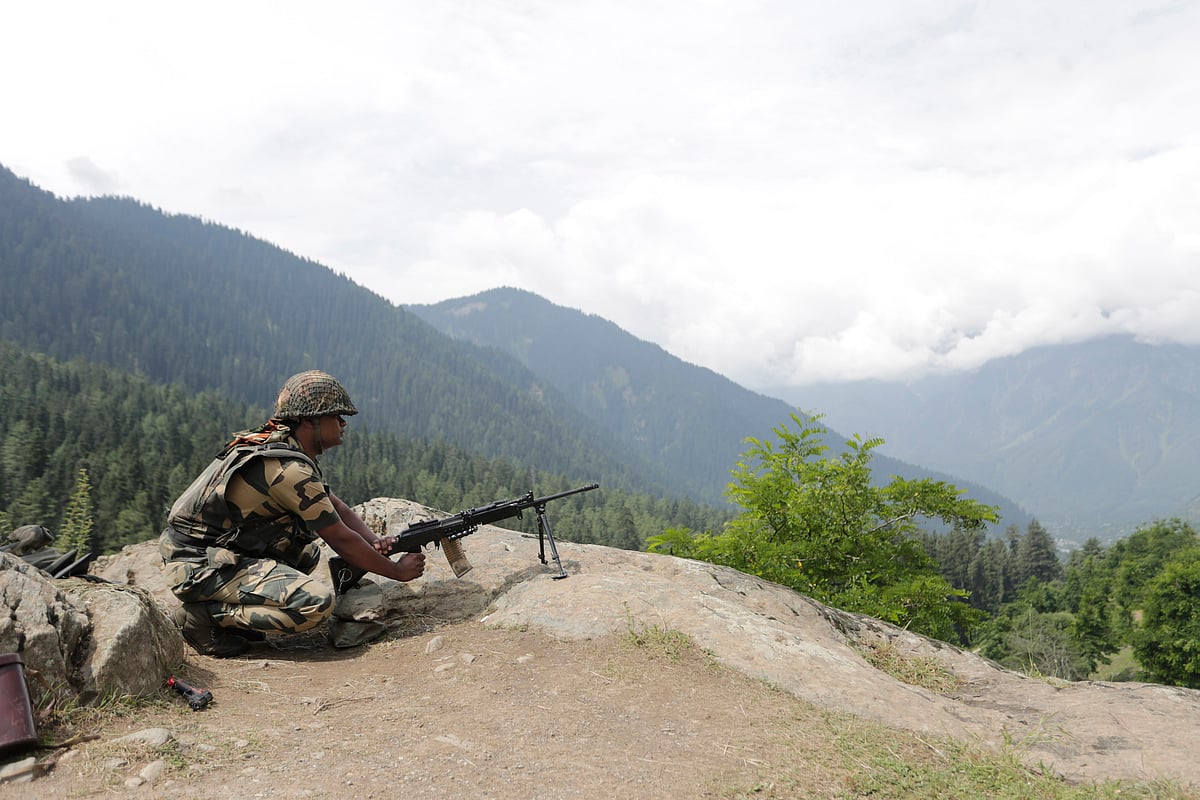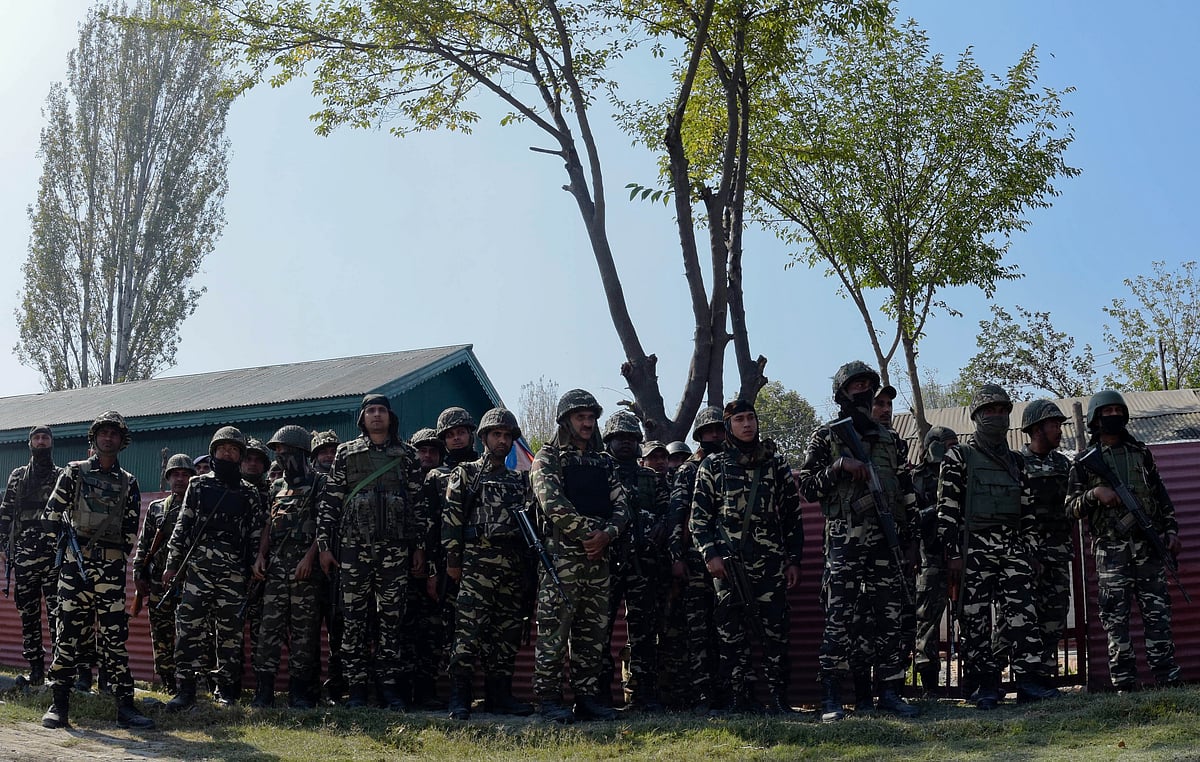Simmering silence of the ‘half’ soldiers
The description ‘Ardh Sainik Bal’ in Hindi clearly riles them. CRPF jawans and officers give vent to their grievances. The government should stop playing to the gallery and redress long-pending issues

A school teacher in West Bengal this week lost his job after people protested one of his Facebook posts in which he had argued that jawans killed on duty were not martyrs. If they were to be treated as martyrs, the post argued, then electricians getting electrocuted and manual scavengers dying while cleaning the sewers should also be called ‘martyrs’.
There was outrage over the post and a mob soon extracted an apology from him and ransacked his house. Ironically, the Government of India in an affidavit filed in the Delhi High Court had also claimed that in the three defence services, officers and jawans killed in the course of duty were described as ‘battle casualty’ or ‘physical casualty’. Therefore, claimed the affidavit filed by the ministries of Home Affairs, Defence and Department of Personnel and Training, there was no question of any discrimination.
The PIL, the ministries pleaded, praying for declaring Central Armed Police Forces (CAPF) killed in action as ‘martyrs’ at par with the Army, Navy and Air Force, was, therefore, misconceived. The word ‘martyr’ did not exist in official records.
While the PIL was filed by two lawyers, the Seventh Pay Commission for central government employees described paramilitary forces as civilian employees’, claimed a retired BSF official in legal affairs portal The Leaflet.
Sanjiv Krishan Sood, former Additional Director General of BSF (Border security Force) wrote, “To add insult to injury, the Seventh Pay Commission has declared BSF and other paramilitary forces employees as ‘civilian employees’, even though the service conditions and duties performed by them are much harsher than that of the Army.”
Members of the CAPF crib that their responsibilities and functions are similar to the Army, that they too have been recipients of gallantry awards for valour; but they not only receive less salary, emoluments and perks, their service conditions are also poorer.
Worse, they are not eligible for any post-retirement pension either.
There was indignation in the ranks when the government created a website Bharat Ke Veer and invited donations to support the families of the Central Reserve Police Force (CRPF) jawans killed in the Pulwama suicide attack. Indeed multiple websites and Apps sprang up within days after Pulwama, each collecting donations from the public. CRPF Wives’ Association teamed up with mobile wallet company Paytm to route donations to the bereaved families of ‘brave hearts’. The gateway link will remain active till March 10.
“Why is the government compensating our sacrifices with money raised through donations? Don’t our jawans deserve basic dignity like any other professional? What the government is doing is a disgrace for the force,” exclaimed a senior CRPF officer requesting anonymity for fear of reprisal.
“There is deep dissatisfaction in the force. The incidents of suicide and fratricide in CRPF are much higher when compared to regular armed forces,” he claimed. Don’t the CRPF jawans suffer the biting cold in the North-East and the scorching heat of the Thar desert, the officer went on to ask indignantly.
The Supreme Court too last year had asked the Centre to have a re-think on whether paramilitary forces including CRPF, BSF, ITBP, CISF and SSB which come under the Ministry of Home Affairs can be given monetary benefits like defence forces which come under the authority of Defence Ministry.

While CRPF shoulders nearly 80 per cent of the security requirements in Maoist affected areas across the country, it has deployed about 65,000 troops as part of 61 battalions in the Kashmir Valley.
CRPF has been helping state police in maintaining law and order, providing security to political leaders, managing protests on the streets and combating insurgency besides performing election duties, protecting VIPs and assisting civil administration in the event of natural calamities.
But then they are the ‘half soldiers’ (Ardh Sainik Bal in Hindi), quips a CRPF jawan. One of his colleagues smirks. “Yes, we are second class soldiers !” he adds.
They recall, and a search confirms, that in June 2016, when the mortal remains of constable Vir Singh reached his village Nagla Kewal in Firozabad district, residents refused to allow public land to be used for his cremation. Singh was one of the eight CRPF jawans killed in the militant attack in Pampore, Jammu and Kashmir.
Even after local administration’s intervention, only 10 metres of land was provided to the grieving family. Singh was the sole bread earner of his family. Even though he had given 25 years to the service, his family comprising wife and three school going children continue to live in a one room tin shed.
In April 2017, Pankaj Mishra, a CRPF jawan, had shot and shared a selfie video in which he raved and ranted about Union Home Minister Rajnath Singh and other politicians over the death of fellow troopers in the Sukma Naxal attack. He deserted his West Bengal-based unit and was later arrested and jailed after CRPF filed an FIR against him in Assam, his place of posting then.
“I request the media to invite soldiers to their studios instead of holding discussions with the officers—who have been exploiting jawans—to know the issues in the armed forces,” he had urged, listing several issues facing the force.
Similarly, another CRPF jawan, Jeet Singh from Sahjua Thok village in Mathura district, who was posted at Mount Abu had also taken to social media, alleging disparity in service conditions among security forces.

Why can’t the Government, which spends thousands of Crores of Rupees on installing statues and on publicity, redress grievances of the CRPF? The question surfaces again and again as they list a litany of grievances.
• Paramilitary jawans lament change of pension system to a “contributory model” that puts them at a disadvantage.
• The dependents of a paramilitary jawan killed in action receive less compensation than an Army jawan.
• An infantry soldier after two years in the field gets to live with his family in peace stations. But opportunities to stay with family are largely denied to the paramilitary jawans. Their duty hours extend to 16 hours a day.
• The constant deployment of troops from one theatre to another has a direct bearing on their training opportunities and resting periods.
• The senior officers are usually drawn from the Indian Police Service and for short durations. They lack experience of dealing with counter insurgency and ground realities in conflict zones.
• A paramilitary jawan working with an Army jawan in the same conflict zone receives as much as 25 percent less pay and allowances.
• CRPF needs a mechanism similar to the Sainik Welfare Board to ensure that personnel who leave the force get reasonable re-employment.
• Establishment of canteen facilities similar to the military’s CSD network;
• Implementation of one rank, one pension and non-functional financial upgradation that provides for financial benefits to those employees who are denied promotion despite eligibility due to absence of suitable vacancies.

Follow us on: Facebook, Twitter, Google News, Instagram
Join our official telegram channel (@nationalherald) and stay updated with the latest headlines
- Ministry of Home Affairs
- BSF
- CRPF
- CISF
- ITBP
- Maoist insurgency
- Central Armed Police Forces
- Kashmir conflict
- Pulwama terror attack
